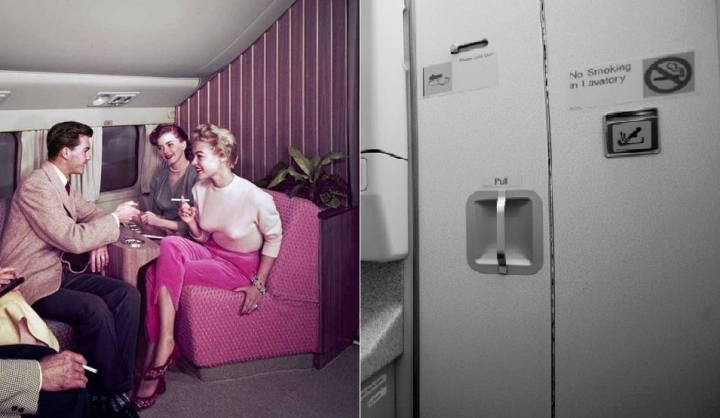Although smoking is prohibited on airplanes, there is still an ashtray in the aircraft lavatory. It may seem contradictory, but in reality, the design of the ashtray does not condone smoking on airplanes but serves as a preventive measure to minimize the risk of fire.
Why are there ashtrays on airplanes if smoking is prohibited?
In the past, passengers could buy cigarettes, lighters, and smoke freely when the plane was flying at an altitude above 9,000 meters without anyone caring. However, since the 1990s, smoking has been banned on all flights worldwide to ensure the safety of everyone onboard.
And if you pay attention, you will notice that ashtrays are often installed in the aircraft lavatory. This raises the question of why ashtrays are placed here.

An ashtray is a minimum equipment requirement on airplanes, despite smoking being banned.
According to the Federal Aviation Administration (FAA), the ashtray for cigarettes is one of the essential devices listed on an aircraft that is almost regulated as a mandatory requirement.
In reality, despite the ban, some passengers still try to smuggle cigarettes and they often choose the lavatory as the place to do so. Without an ashtray, these passengers who disregard the regulations and smoke on the plane would mostly dispose of their cigarette butts in the toilet paper compartment or “flush” them down the toilet. This behavior is truly dangerous and can have extremely serious consequences.
A clear example of the danger of not having ashtrays on airplanes is the Varig Flight 820 in 1973, where 123 passengers died on the flight from Rio de Janeiro (Brazil) to Paris (France) due to a fire caused by a cigarette being thrown into the trash bin in the toilet. The plane’s cabin was filled with smoke, and the pilot had to make an emergency landing in a field 15km south of the capital of France.
For that reason, the installation of ashtrays in the lavatory is highly regarded. The presence of an ashtray on or near the lavatory door provides a convenient location for passengers to discard their cigarettes, and although smoking is prohibited on flights, ashtrays must be installed because if someone were to light a cigarette, there needs to be a place for them to safely extinguish it.
And of course, those who deliberately violate the regulations will be appropriately punished because as soon as the smoke detection system on the plane is triggered, it will activate and report the person who intentionally violated the rules. Depending on the regulations of each airline and each country, you may receive a warning, but most likely you will be fined a significant amount. In the United States, the penalty can be as high as $20,000 (approximately 480 million VND).
Source: VTC.vn






























